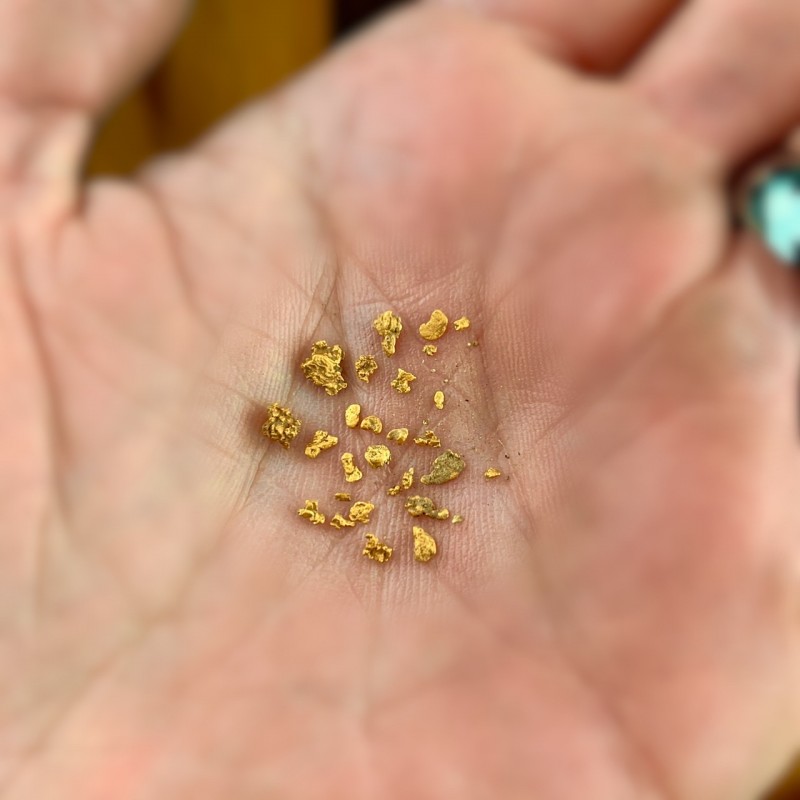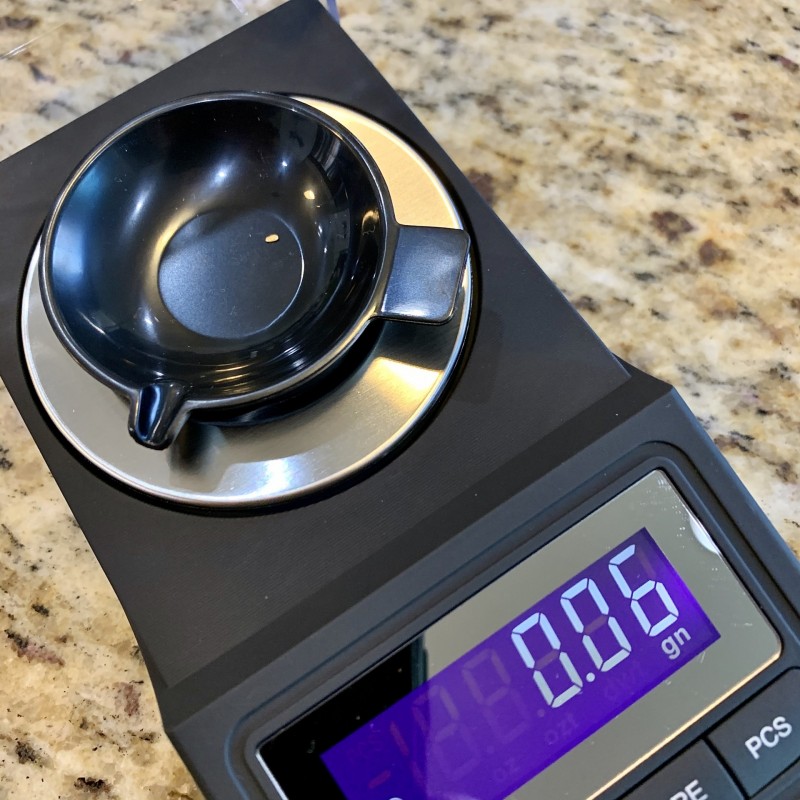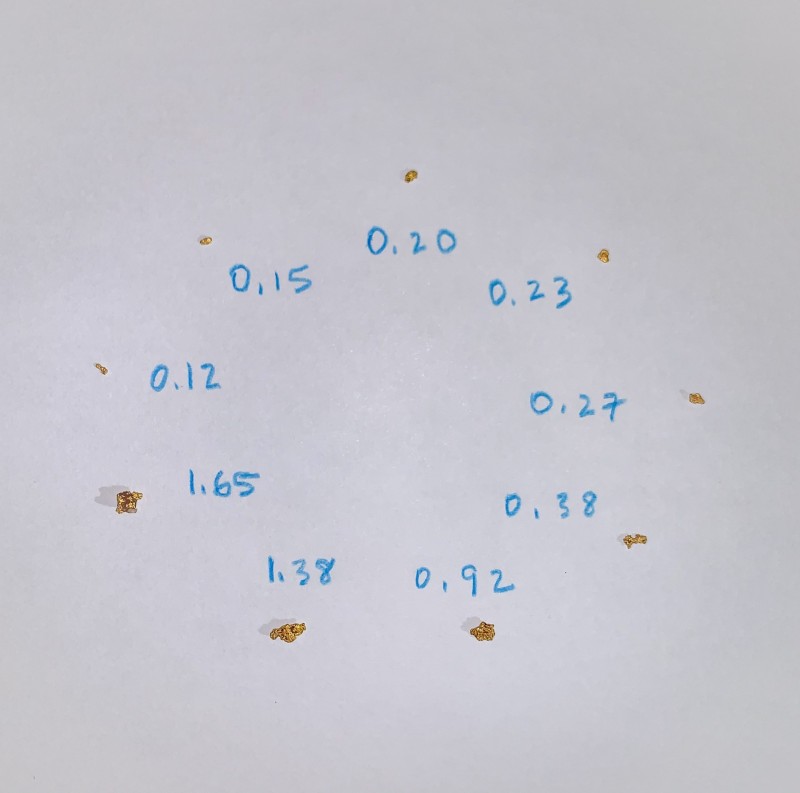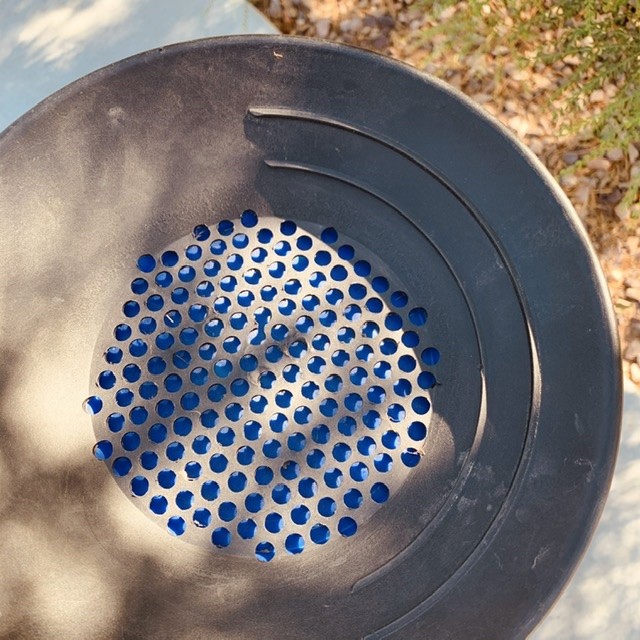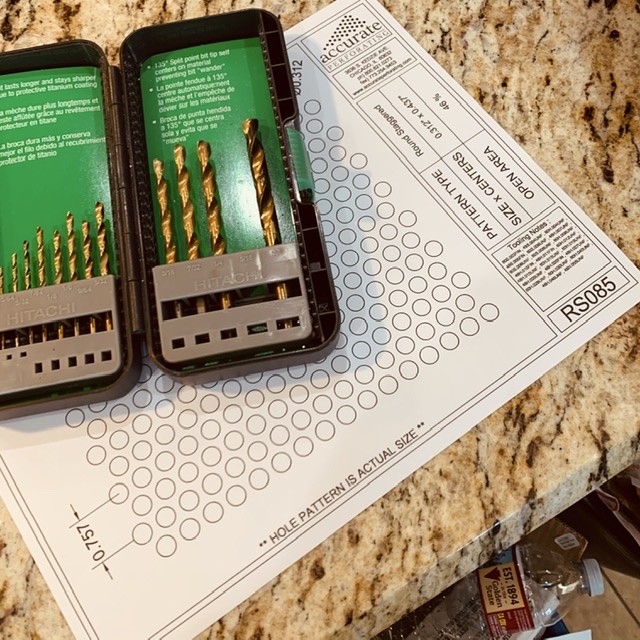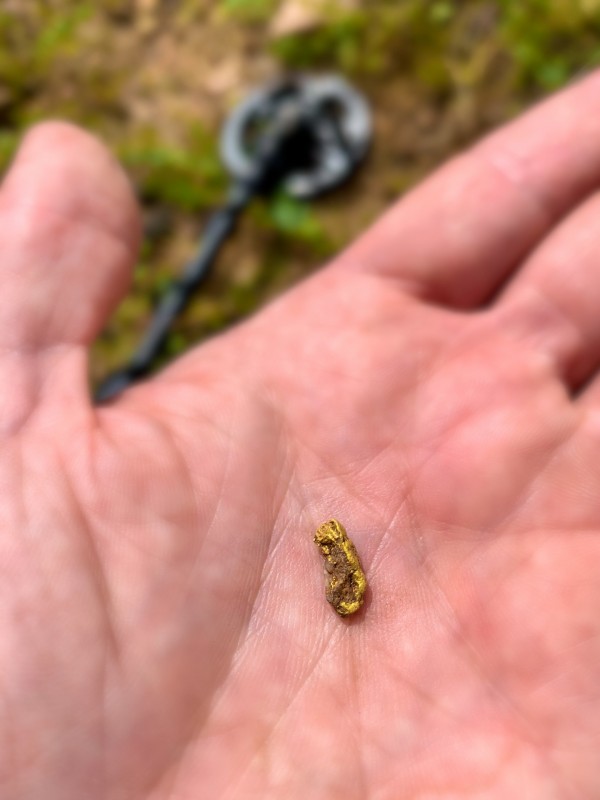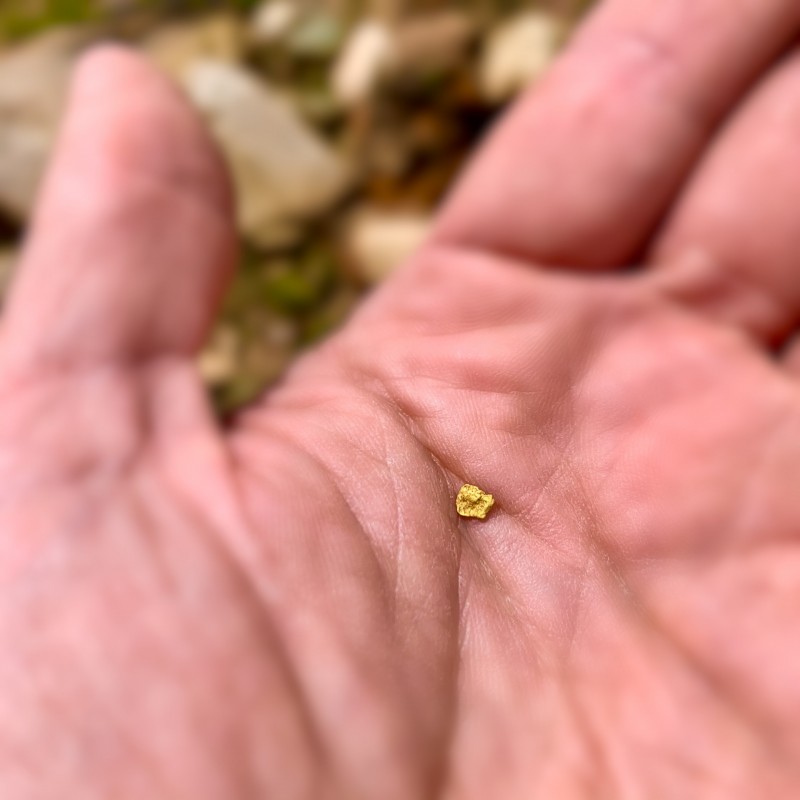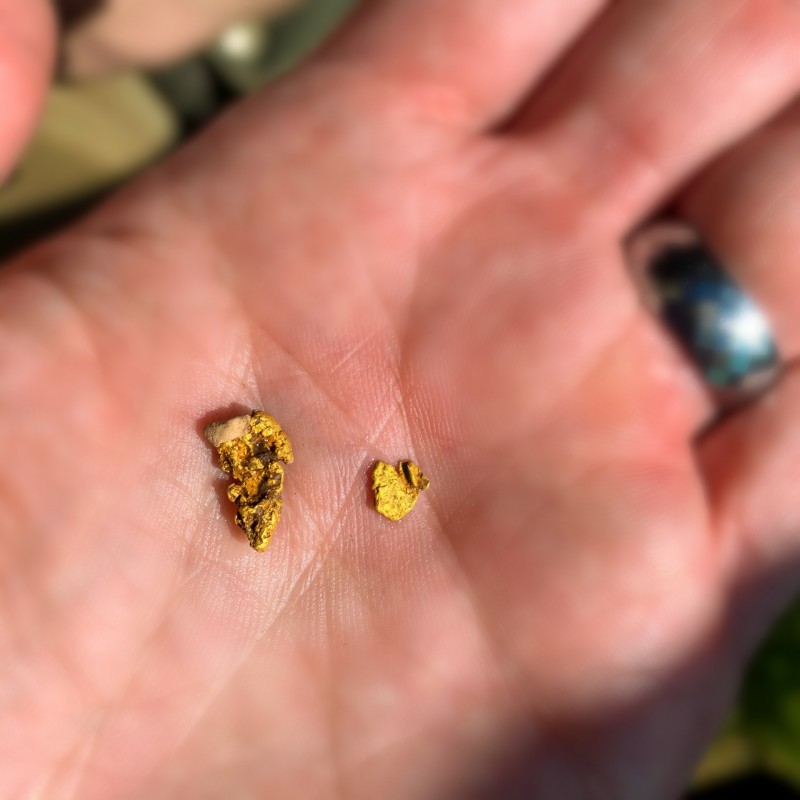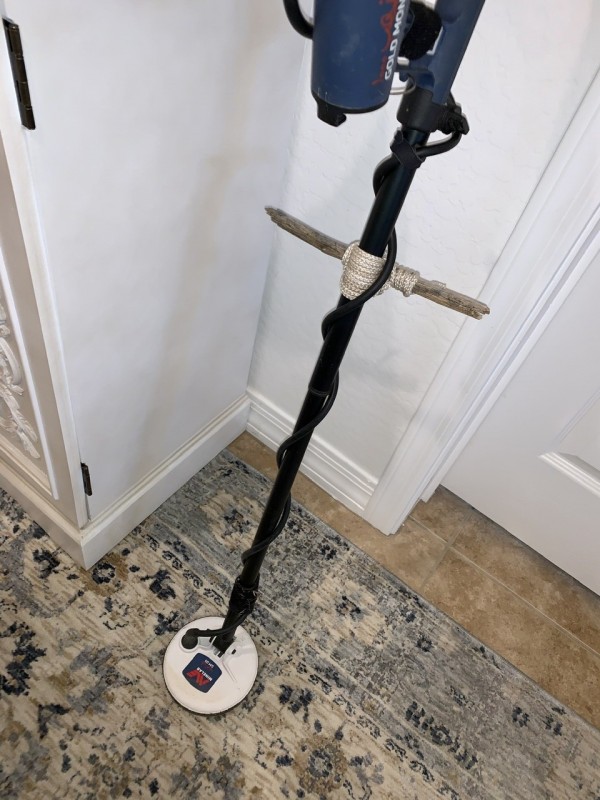-
Posts
176 -
Joined
-
Last visited
Content Type
Forums
Detector Prospector Home
Detector Database
Downloads
Everything posted by Skookum
-
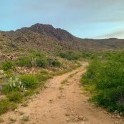
Localizing Desert Hillside Detectable Gold
Skookum replied to Skookum's topic in Detector Prospector Forum
I've had a question about using the colors of the dirt as indicators for awhile. If an area has a both lighter/bleached dirt and rocks in the vicinity of red rocks and dirt, how do you typically interpret that? Of course, everyone loves to talk about rich mineralized, red dirt in gold bearing areas. However, I've also read that acidic compounds in mineralized ground can "bleach" the area as a useful indicator, as well. In your experience, do you typically find one sign more helpful than the other? -

Localizing Desert Hillside Detectable Gold
Skookum replied to Skookum's topic in Detector Prospector Forum
In the watershed there is a big flat area of concentrated, undisturbed, coarse quartz with dark, black and red, vuggy inclusions. It looked so good, but there just wasn't much to find detecting up that way past a certain point in the wash. I did multiple test pans feeding from those areas and found some flour gold, but nothing bigger. Running right through the wash perpendicularly is a contact zone in the bedrock. The only way I know there is a contact zone is from the Macrostrat bedrock map. This seems to transect the area with more nuggets, but the contact zone isn't really obvious to my eye. It doesn't help much that there are quartz veins everywhere. Do you find that these major contact zones on maps are of any help in locating sources? In this case the part that looks the most alluring with all of the vuggy quartz is in the middle of the area without any contact zone on the map. The part that doesn't look the that great in person is nearest to the contact zone and closer to the finds. -

Localizing Desert Hillside Detectable Gold
Skookum replied to Skookum's topic in Detector Prospector Forum
This may actually be occurring, which I hadn't considered. I found some of the water worn pieces at the higher point in the wash and some of the larger, rougher pieces in the mid portion. The other things you mentioned lay out a dizzying mystery of geologic layers. I suppose the one good thing here may be that the bedrock is superficial from the wash to the hilltops. I hope that bodes well for having less layers for less complication. Tied into your explanation may be an answer to one of my other questions. It sounds like hillside gold can truly be either deep or shallow without easy generalization. I keep thinking about that Jack London short story, All Gold Canyon, where the pocket was deeper towards the source. Thanks for the in depth insights. -

Localizing Desert Hillside Detectable Gold
Skookum replied to Skookum's topic in Detector Prospector Forum
Do you think the breadth of a fanned deposit is more dependent on distance traveled or grade of incline? For instance, this locale has hills no more than 10-30 feet high. Would you expect that translate into a tighter line because it hasn't far to travel, or would that more likely mean a broader fan, because the slope is so shallow? -

Localizing Desert Hillside Detectable Gold
Skookum replied to Skookum's topic in Detector Prospector Forum
I looked for his info on the topic, but Google comes up dry searching for that user handle. I see another thread here talking about him and detecting burn scars. Perhaps, he's changed his online name? Maybe I'll have to search up his past article in ICMJ. -

Localizing Desert Hillside Detectable Gold
Skookum replied to Skookum's topic in Detector Prospector Forum
How narrow and/or shallow have you found the lines to be? -
I’m seeking some wisdom in taking the next step in my prospecting journey. Up to this point, most of the gold I’ve found has been in riverbeds or washes. I’m not quite sure how to move from them into the hillsides. Here’s a current scenario, perhaps as a template to discuss. Recently, I’ve found a little desert wash with a fair amount of small, detectable gold. It’s within a broader area generally known for old-time dry washing. I can find no signs of old workings in this relatively short wash. Nevertheless, there are a few, very recent spots where someone has vacuumed and drywashed small portions of the bedrock. When I come across something like this, I typically test things out to see if someone else has been both onto and missing anything. Indeed, things were both found and missed. Over the course of several trips, I detected 55 small nuggets concentrated along the shallow bedrock. Pictured here are the results from my last trip. Twenty seven pieces detected in one half-day. I found that even an inch or two of overburden was masking many of the signals. So, out came the rake and up came the signals. As I mentioned, this particular wash is small and shallow. Perhaps, it is 1-3 feet wide with a lot of of exposed bedrock. The overburden is anywhere from none to 1 foot deep. In only a few places, at the turns, do the banks accumulate up to 2 feet deep. I have yet to find detectable gold in any of the surrounding washes. This leads me to wonder if there is a hillside source for these little nuglets. I’ve tracked them to the point at which they peter out moving upstream. I’ve been thinking this may or may not be the starting point since eons of erosion could have taken them in either direction before the current topography set in place with such a shallow grade. My overarching question is how do you approach moving from washes into the hillsides in search of a possible source? Do you loam the hillsides before electronic surveillance? Or, vice versa? Do you set off detecting the area in a systematic fashion? Do you only detect at reefs or contact zones? How deep do you typically find desert hillside gold? Any tips, or advice, or preferences are points of valuable reference for me and would be sincerely appreciated.
-
One week later, the < 0.1 grain threshold has been breached with the runt of the batch using the GM1k. Initially, couldn’t tell if it was lead or gold because a white, dusty coating made it look like the rest of the tiny debris. I placed it on my tongue to clean it only to realize I couldn’t feel where it was in my mouth. After a moment of pondering my predicament, some forceful spitting and sputtering got it back into my scoop. I won’t be doing that for any nuggets of this size, again.
-
Today, out with the GM 1000. None under 0.1 grain as Steve has found. But, pretty tiny for me nonetheless. Leftovers after someone using a Gold Bug 2!
-

Your Techniques For Trashy Tailing Piles
Skookum replied to vanursepaul's topic in Detector Prospector Forum
Now that’s a magnet!- 64 replies
-
- minelab equinox
- alaska
-
(and 1 more)
Tagged with:
-

Diy Small Pan Size Classifier
Skookum replied to Skookum's topic in Gold Panning, Sluicing, Dredging, Drywashing, Etc
Awesome. They look handy. What’s in the bottom of the largest diameter one? Is that a Garrett classifier? -
Have you ever wished for a smaller classifier that fits your small pan for remote, hiking and sampling purposes? Here’s something that may work at least until any manufacturer decides that small pans deserve matching classifiers, too. 1. Select a pan that nests inside the one you want to use. 2. Download and print a steel perforating template. 3. Use some water soluble glue to affix the template to the bottom of your extra pan. 4. Once the glue is dry, drill small pilot holes through the center of each circle on the template. I used a 3/32 inch for the pilot hole. 5. Next, use a larger drill bit to match the size of the holes on your template. I used 5/16 inch holes. Advance the bit carefully so as to not bite to quickly and crack your pan (like I did). 6. Afterwards, soak and rinse off the template and glue. The picture below is a 10” black pan nested inside a 10” blue pan.
-

Your Techniques For Trashy Tailing Piles
Skookum replied to vanursepaul's topic in Detector Prospector Forum
I've wondered about coating them with either silicone or epoxy. Supposedly, once the nickel/copper coating wears off the magnets will degrade. I haven't ever seen anybody coating his or hers though. Maybe someone with more experience here has.- 64 replies
-
- minelab equinox
- alaska
-
(and 1 more)
Tagged with:
-
I suppose it makes sense from their point of view. Why should they want to lose money on giving away free accessories? The SDC has always been popular without them. In contrast to a new owner’s point of view, it’s like they are fixing know issues. (Yeah, we know the steering wheel gets really hot in this car, so we’ve included a plush steering wheel cover for you with your purchase. 😁) At the end of the day, to them maybe it’s more like a new version than a fix. Makes me wonder if there is a new MSRP.
-

Your Techniques For Trashy Tailing Piles
Skookum replied to vanursepaul's topic in Detector Prospector Forum
Yes. That may be a decent idea. I believe some of those circular K&J magnets have a #10 countersunk hole. I haven't gone as far as taking the screw out of the Harbor Freight magnet to size it up. There is something to be said for not to having to kneel down for every flake of iron.- 64 replies
-
- minelab equinox
- alaska
-
(and 1 more)
Tagged with:
-

Your Techniques For Trashy Tailing Piles
Skookum replied to vanursepaul's topic in Detector Prospector Forum
That's it. The price was right and I was in a rush. 🙂. The downsides are that it’s an extra tool to handle and it’s not a neodymium magnet. The upsides are that it is cheap, it can be used while standing, it is easily pushed into and through loosened dirt. It got the job done nicely.- 64 replies
-
- minelab equinox
- alaska
-
(and 1 more)
Tagged with:
-

Gold Monster Coil Comparison Test
Skookum replied to Steve Herschbach's topic in Minelab Metal Detectors
I thought this testing method was an interesting choice. It’s a good idea of what to do when it’s too darn hot to go outside here in AZ. One question I had was how does a moving target in motionless dirt affect the results? Wouldn’t the dirt need to be moving in order to create a signal that the detector would sense and also trigger auto ground balance? Maybe that’s what you’re getting at with a manual sensitivity setting, Phrunt. Because of that, I took it as a relative depth test between coils, not as an accurate depth test even though it’s using a fixed soil barrier. Thoughts? -

Your Techniques For Trashy Tailing Piles
Skookum replied to vanursepaul's topic in Detector Prospector Forum
It’s been a while of meaning to reply to this thread. I certainly don’t want to hijack it, rather follow up with the results of the good advice given here. Shortly before reading the above comments, I was hunting some trashy tailings piles, as well. I chose the 5” coil on the GM1000 and found 2 nuggets. The amount of trash was profound. As has been said, I figured it meant few others had bothered with it. After seeing VAnursePaul’s timely post, I went back to the same piles, but took along a dirt-cheap Harbor Freight Pittsburg Heavy Duty Magnetic Pickup Tool for $7.99. I couldn’t wait for the order of K&J magnets that Rob recommended to arrive. (By the way, those magnets are amazing! Thanks for the recommendation.) In the meantime, the cheap pickup tool worked great. It wasn’t neodymium strength, but there was no way I could have processed that pile without it. The second time around, the EQX 800 with the 6” coil put up a good fight against the Gold Monster. In a strange way, the Equinox is more pleasing to the ear, but I digress. After a filling a pouch with iron bits, two more nuggets popped out. VAnursePaul, thanks for the great question and, as always, the generous sharing of responses. Thanks, guys.- 64 replies
-
- minelab equinox
- alaska
-
(and 1 more)
Tagged with:
-
Hopefully, it's solid for you when you get it back. I took the plunge and performed the bathtub test, last night. After soaking it 8 hours in 1 foot-ish of water, all seems normal. Any ideas if it takes deeper water/more pressure for the failures to occur?
-
After some time has passed for further clarification, it appears that the upgrades will not be covered under warranty. Owner's are told that they should contact their local dealers and see what they might do to accommodate for the changes. I'm not exactly sure what that means, but that's the official story.
-
Called Minelab, N.A., today. Asked if there was information on whether there would be any accommodation for those still under warranty. Phone support just received the first official upgrade info, yesterday. Sounds unlikely, but further details need ironing out. One point made was that current old stock is still needing to be consumed. It sure would be nice for those of us who just got one to not have to pay a lot for some of the "fixes". I haven't seen any prices, yet, either.
-
Sorry to hear that. I received one of the first units available here, but have been chicken to test it. Has anyone here done the bathtub dunk check or the like and recommend doing it?
-
It was the last straw for a detector that tips over on any and every bit uneven ground. It actually worked not so bad. If anybody needs to just get through the day, you could give this a try. Fifty cents of nylon braided rope, a juniper branch, and some good, old-fashioned Boy Scout lashing. Just make sure the frapping is good and snug. It might work even slightly better to carve a groove for the shaft into the stick. If it loosens a little, just re-frap and you’re good to go. Yes, there are more elegant manufactured versions available, but isn’t the saying “frustration is the mother of invention”?
-

Gold Indian Head, My Best Find Ever
Skookum replied to dogodog's topic in Metal Detecting For Coins & Relics
One of the coolest American coins ever made! Congrats.- 42 replies
-
- coin detecting
- gold found
-
(and 1 more)
Tagged with:
-

Arizona Suction Dredging
Skookum replied to Jim_Alaska's topic in Gold Panning, Sluicing, Dredging, Drywashing, Etc
Jim_Alaska, I hope that didn’t sound like I was telling you how to research claims. What I mean is that because our suitable dredging areas are very limited here, the clubs may be an easier route for you. To your point, and to add to what has been said, it appears you may need written permission from the land agency plus the ACoE. I remember hearing before that the ACoE is involved in monitoring all drainages here whether there is water or not. The club paperwork I have seems to suggest that, as well. But, I’ll have to leave that definitive answer to someone else that has done it all themselves. Hope that helps. Best luck.


